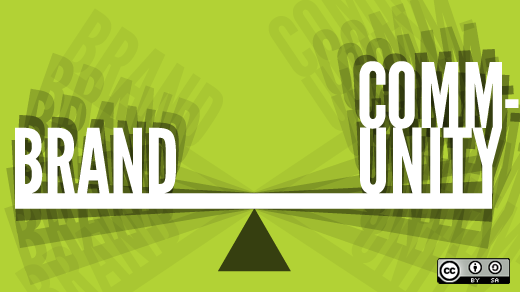In his book, The Open Organization, Jim Whitehurst explains how the open source way of thinking has the power to influence the way organizations operate, not just how they can develop software. As a Senior Brand Explorer at the brand agency New Kind, much of my work involves guiding research projects for technology companies interested in using open source-inspired strategies for communicating and collaborating with customers and community members.
At New Kind, we think about our research through an open source lens. I wanted to share a few examples of research projects we conducted with the open source technology leader NGINX to give you a sense for how applying the open source way to research can deliver compelling results.
About NGINX
NGINX is the heart of the modern web, powering half of the world's busiest sites—from Airbnb to Netflix to Uber. NGINX helps deliver applications faster, promising performance, reliability, security, and scale. The NGINX application delivery software helps businesses innovate, adapt, and deploy extraordinary experiences for a new generation of customers who expect instantly available, highly personalized digital experiences. The NGINX open source project began in 2002, and has grown exponentially since then.
Today millions of the most forward-thinking developers, sysadmins, and IT professionals are part of the NGINX community. As the open source project (and the company behind it) grow, the brand must stay as flexible and adaptable as the software itself. It must be able to scale while maintaining the core elements that have built its reputation across the world. One way NGINX leaders have achieved this balance is by using research to engage users in open communication.
New Kind has worked with NGINX on a variety of projects, one of which is to help the NGINX team design and implement the research strategy for their brand. Knowing NGINX has a strong brand story and an active community, their strategy leverages the research process to engage users, learn from them, and use their insights not only to inform product direction, but also to generate industry insights. Two recent projects show how NGINX uses research to engage their community:
- their annual brand perceptions survey
- their recently published industry report entitled The Future of Application Deployment and Delivery is Now
Approaching the perceptions survey as an avenue for open exchange
Many companies survey their customers and community members. This is nothing new. But what sets NGINX apart is the research mindset. NGINX understands that its users are some of the most forward-thinking technologists in the world, so they treat the research process as an opportunity to engage in a dialog with their community about the future. Research is only one of several avenues NGINX uses (including an annual user event, an active forum, and other community resources). To NGINX, research isn't one-sided. It's more than just a means to understand how to market more effectively.
NGINX uses the research process to involve their users as co-creators, whether they're using the community version of the product or NGINX Plus (the subscription version of the software). Their yearly brand perception surveys not only help them monitor how their users perceive the software and the company, but also give them insight into where the community is giving NGINX permission to take the brand in the future.
NGINX takes to heart what they learn. They use the data they collect to shape the future. And they work to continue building products that truly reflect the desires of the community. The end goal is to ensure NGINX users have an active voice in determining the future direction of the brand, products, and the company.
Tapping the intelligence of an innovative user community
The NGINX team took a similar approach to their public report entitled The Future of Application Deployment and Delivery is Now. This report was the final result of a comprehensive research project intended to deepen an ongoing dialogue that benefits both NGINX and their user community.
We started the project with the goal of tapping into the collective intelligence of the NGINX community to learn where the field of application development and deployment is headed. We hoped to learn from some of the smartest application development and deployment experts in the world, then share their insights with the broader community so that everyone could benefit.
Just by promoting the survey on their blog and through social media, NGINX captured the thoughts and sentiments of over 1,800 IT professionals from all over the world. We worked together to synthesize the data.
In the process, we uncovered several interesting trends regarding the future of containers, microservices, and the cloud. We also learned a lot about the mindset of developers, where they struggle, what is really working for them, and what they love and hate.
Then we shared these findings openly in an easy-to-digest format. Our hope was to spark discussion and contribute to the body of shared knowledge about the future of the industry for others to learn from and build upon.
A brand that grows with its community
NGINX uses the research process both to nurture and grow a healthy open-source community and to scale their brand. Their strategy is built on a deep respect for the talent, knowledge, and experiences of their community members. Their approach centers around listening and understanding their community's passions and needs. By harnessing the voices of its community, the NGINX brand will continue to grow, scale, and adapt for and with the help of the people who care about it most.






Comments are closed.